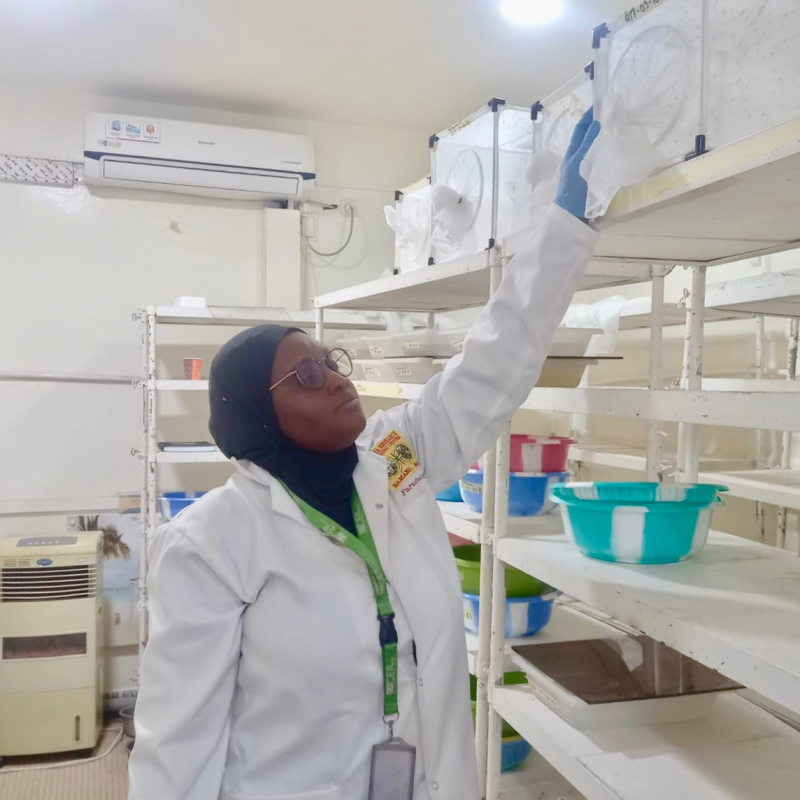A new tool to fight viral diseases spread by mosquito bites, which are a health concern in many African countries, is the focus of Malian TWAS grantee Fatalmoudou Tandina's research. She is working to find effective strategies to reduce the insects' impact on the population, and contribute to mosquito-control strategies.

Tandina is a 2021–2023 recipient of a Seed Grant for New African Principal Investigators (SG-NAPI), and currently works at the University of Sciences, Techniques and Technology of Bamako, Mali's capital city. She is using the grant to develop a system for the molecular identification of mosquitoes and the arboviruses species that they carry.
Arboviruses are a group of viruses that infect insects such as mosquitoes and ticks, which can transmit to humans through their bite. They cause a wide range of infectious diseases, whose symptoms vary from mild to severe, sometimes leading to death.
"Identification of a mosquito from its appearance is not enough, this is why we need to analyze the insect genome and then identify the viral species that they carry," Tandina said. "When the Aedes mosquitoes feed on human blood, in fact, they can easily transmit the virus to humans, who then may develop diseases such as chikungunya, dengue, yellow fever, and Zika virus disease."
Vector-borne diseases, caused by creatures such as mosquitoes, flies, and ticks, are widespread throughout sub-Saharan Africa. "Vector-borne diseases account for more than 17% of all infectious diseases, causing more than 700,000 deaths annually, especially in tropical and subtropical areas", according to the World Health Organization. Effective vector control methods can be adopted knowing the vectors' habits and diffusion.
Drafting a map of the insects' distribution and potential arboviruses transmission would indeed support decision-makers in the adoption of effective control measures. Research conducted in other countries has shown that studying the mosquitoes' DNA and their ranges is a promising approach. The ultimate goal of Tandina's research is to contribute to strategies for controlling, and possibly eliminating arboviruses infections in Mali.

"As an early-career scientist, the SG-NAPI grant is a great opportunity for me to set up my own laboratory. This grant allows me to become a professional entomologist and teach students," Tandina said. In addition, the grant allowed her to hire a young woman as a lab collaborator.
The SG-NAPI programme stems from a seven-year agreement that TWAS and the German Federal Ministry of Education and Research (BMBF) established in 2020. The aim was to strengthen the capacity of scientists from African countries lagging in science and technology. Then, early in 2021, they launched the first call.
The programme stands out as a chance for training, skill development, and long-lasting collaborations. Grants are awarded to promising research projects, to enable scientists from 47 eligible countries to purchase the research facilities they need.
Mosquitoes and viruses
Mosquitoes of the genus Aedes include more than 950 species, many of which may host at least five different types of arboviruses, able to transmit severe diseases to humans. However, scientists still lack a full picture of which mosquito species carry which virus.
Likewise, their preferred habitat is not clear. Aedes aegypti, the main vector of the yellow fever virus, for example, has been reported in towns, villages and savannas across Mali. Female Aedes mosquitoes feed aggressively during the day, with peak activity at dawn and dusk. Some feed and breed outdoors, others live in close association with humans, laying their eggs indoors. Eggs may remain viable after long dry periods, enabling the insect survival to variable climatic conditions. Climate change, in fact, is among the variables affecting vector-borne disease transmission and spread.
Common measures against these mosquitoes include free mass distribution of long-lasting insecticide-treated mosquito nets, aiming to protect, in particular, pregnant women and children under five. Still, the problem persists.
Understanding which mosquito species sustains specific arbovirus transmission, and knowing their habits is the first step to create a distribution map and take targeted measures against the vectors. Mosquitoes distribution and prevalence is different in each area, and it’s important to define where they live. This is where Tandina's SG-NAPI-supported project comes in.
In the first months of her investigation, Tandina collected about 300 mosquitoes from the rural village of Faladie, 80 kilometres from Bamako, Mali's capital city. Then, by analizing the mosquito's DNA, she identified at least six species circulating in Mali. Other molecular analyses helped her team confirm that more than 56% of the sampled mosquitoes had an arbovirus.

"We are now focusing on the determination of what arboviral species each mosquito was carrying," she explained. This finding will contribute to more accurate diagnoses. Once they are admitted to hospitals, in fact, patients tend to be diagnosed with malaria at first glance, Tandina said. The arbovirus diagnosis, hence, should help doctors avoid diagnostic mistakes and delays in treatment.
The importance of education
Research is not Tandina's only interest. She is a passionate tutor and loves dealing with students. "I'm grateful to the SG-NAPI grant because it allows me, for the first time, to be a teacher," she said. "Being a female scientist in Mali is not easy. And integrating research with teaching young women scientists gives me the sense of being useful to my country."
In the months ahead, she plans to find new young students and technicians, to establish a local, competitive laboratory. But with time, she also plans to travel abroad to receive further training from foreign collaborations.
Cristina Serra

